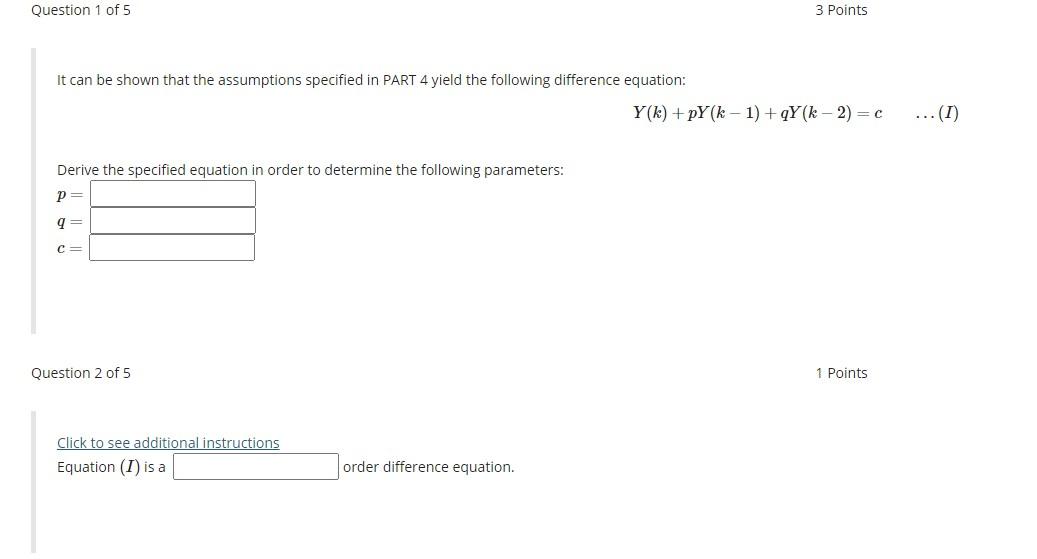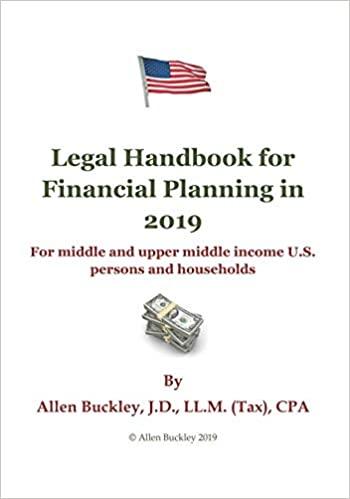Please could anyone assist with these three questions.Thanks In advance



An economic model that describes the national income of a country consists of the following quantities (for any accounting period k): Y(k) = national income C(k) = consumer expenditure I(k) = induced private investments G(k) = government expenditure A relationship between these quantities is based on the following assumptions: The national income is the sum of the consumer expenditure, induced private investment and government expenditure. Consumer expenditure in each period is directly proportional to the national income in that period. The proportionality constant should be named a > 0. Induced private investment in each period is directly proportional to the difference of the national income of the preceding two periods from the national income of the preceding period. The proportionality constant should be named b > 0. Government expenditure stays constant from one period to the next therefore G(k) = 9, where g is a constant. Answer the following questions in order to analyse the problem. Question 1 of 5 3 Points It can be shown that the assumptions specified in PART 4 yield the following difference equation: Y(k) + pY(k-1) +qY(k - 2) = C Derive the specified equation in order to determine the following parameters: p= q= C= Question 2 of 5 1 Points Click to see additional instructions Equation (1) is a order difference equation. Question 4 of 5 2 Points The equilibrium solution for the difference system of first order difference equations which corresponds to the difference equation (I) is equal to (Ze, Ze= Provide the solution in its simplest form and in terms of c,p and q. An economic model that describes the national income of a country consists of the following quantities (for any accounting period k): Y(k) = national income C(k) = consumer expenditure I(k) = induced private investments G(k) = government expenditure A relationship between these quantities is based on the following assumptions: The national income is the sum of the consumer expenditure, induced private investment and government expenditure. Consumer expenditure in each period is directly proportional to the national income in that period. The proportionality constant should be named a > 0. Induced private investment in each period is directly proportional to the difference of the national income of the preceding two periods from the national income of the preceding period. The proportionality constant should be named b > 0. Government expenditure stays constant from one period to the next therefore G(k) = 9, where g is a constant. Answer the following questions in order to analyse the problem. Question 1 of 5 3 Points It can be shown that the assumptions specified in PART 4 yield the following difference equation: Y(k) + pY(k-1) +qY(k - 2) = C Derive the specified equation in order to determine the following parameters: p= q= C= Question 2 of 5 1 Points Click to see additional instructions Equation (1) is a order difference equation. Question 4 of 5 2 Points The equilibrium solution for the difference system of first order difference equations which corresponds to the difference equation (I) is equal to (Ze, Ze= Provide the solution in its simplest form and in terms of c,p and









